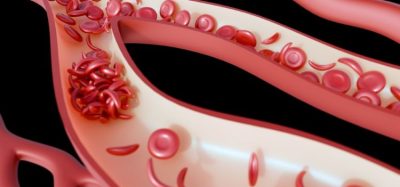Cialis® for once daily use now FDA approved
Posted: 7 October 2011 | | No comments yet
Eli Lilly and Company (NYSE: LLY) announced today that the U.S. Food and Drug Administration (FDA) has approved Cialis® (tadalafil) tablets for once daily use for the treatment of men who have both erectile dysfunction and the signs and symptoms of benign prostatic hyperplasia (ED+BPH). The FDA also approved Cialis for once daily use for a separate indication for the treatment of the signs and symptoms of BPH. This means Cialis is now approved for three indications: ED, the signs and symptoms of BPH, and ED and the signs and symptoms of BPH in men who have both conditions.
To view the multimedia assets associated with this release, please click: http://www.multivu.com/mnr/52031-eli-lilly-and-company-cialis-fda-approval
The new indications for Cialis for once daily use are based on a clinical trial program of three placebo-controlled efficacy and safety studies that included 1,989 men. Two of these studies were in men with BPH, and one study was specific to men with both ED and BPH. In the ED+BPH study, Cialis 5 mg for once daily use significantly improved scores on the International Index of Erectile Function-Erectile Function Domain (IIEF-EF), a questionnaire evaluating sexual function, and the International Prostate Symptom Score (IPSS), a questionnaire evaluating symptoms of BPH.
It is important to note that Cialis is not to be taken with medicines called “nitrates” (often prescribed for chest pain); or with recreational drugs called “poppers” like amyl or butyl nitrite, as the combination may cause an unsafe drop in blood pressure; or if allergic to Cialis or Adcirca® (tadalafil), or any of its ingredients. Anyone who experiences any symptoms of an allergic reaction, such as rash or hives, should call a healthcare provider or get help right away.
“Since many men who have ED also experience the signs and symptoms of BPH, a single medication approved to treat both may be a significant therapeutic option for men and physicians,” said Claus Roehrborn, MD, chairman, Department of Urology, The University of Texas Southwestern Medical Center. “The FDA approval of Cialis for once daily use for the treatment of ED and the signs and symptoms of BPH provides a new option that allows men to treat both with one daily medication.”
Cialis inhibits an enzyme called phosphodiesterase type 5 (PDE5). By inhibiting PDE5 in the penis, Cialis helps produce vascular relaxation and increases blood flow. PDE5 enzymes are also found in the prostate and bladder. The mechanism for how Cialis reduces BPH symptoms has not been established.
“These additional indications for Cialis reinforce our commitment to providing medical innovation in the area of men’s health,” said Dave Ricks, Lilly USA President. “We’re encouraged that Cialis provides a new treatment option for men affected by both ED and the signs and symptoms of BPH.”
About ED and BPH
ED is a condition where the penis does not fill with enough blood to harden and expand when a man is sexually excited, or when he cannot keep an erection. Approximately 50% of men between 40-70 years old have ED.(1)
BPH is a condition where the prostate enlarges, which can cause urinary symptoms.
ED and BPH are conditions that may occur in the same patient. Several studies have shown that many men with ED also experience the symptoms of BPH.(2,3,4)
About Cialis
Men with ED have two different dosing options with Cialis in the United States — Cialis for once daily use (2.5 mg and 5 mg) and Cialis for use as needed (5 mg, 10 mg and 20 mg).
Cialis for once daily use is approved to treat ED, the signs and symptoms of BPH, and ED and the signs and symptoms of BPH in men who have both conditions (ED+BPH). Only the 5 mg dose is approved to treat BPH and ED+BPH.
Cialis for once daily use can help men with ED be ready anytime between doses*, so they do not have to plan sexual activity around taking a pill. It can also treat the signs and symptoms of BPH. Cialis for once daily use is the only medication approved to treat both ED and the signs and symptoms of BPH.
Cialis for use as needed is approved to treat erectile dysfunction (ED). Cialis for use as needed should be taken before sexual activity. It may go to work quickly (in as little as 30 minutes in some men) and can work up to 36 hours.* #
The most common side effects with Cialis are headache, indigestion, back pain, muscle aches, flushing and stuffy or runny nose. These side effects usually go away after a few hours. Men who get back pain and muscle aches usually get it 12 to 24 hours after taking Cialis. Back pain and muscle aches usually go away within two days.
* Individual results may vary. Not studied for multiple attempts per dose.
# In clinical trials, Cialis for use as needed was shown to improve, up to 36 hours after dosing, the ability of men with ED to have a single successful intercourse attempt.
Important Safety Information for CIALIS® (tadalafil) tablets
What Is The Most Important Information I Should Know About CIALIS?
Do not take CIALIS if you:
- take medicines called “nitrates” which are often prescribed for chest pain as the combination may cause an unsafe drop in blood pressure
- use recreational drugs called “poppers” like amyl nitrite and butyl nitrite
- are allergic to CIALIS or ADCIRCA® (tadalafil), or any of its ingredients. Call your healthcare provider or get help right away if you experience any symptoms of an allergic reaction, such as rash or hives.
After taking a single tablet, some of the active ingredient of CIALIS remains in your body for more than 2 days. The active ingredient can remain longer if you have problems with your kidneys or liver, or you are taking certain other medications
Stop sexual activity and get medical help right away if you get symptoms such as chest pain, dizziness, or nausea during sex. Sexual activity can put an extra strain on your heart, especially if your heart is already weak from a heart attack or heart disease.
What Should I Tell My Healthcare Provider Before Taking CIALIS?
CIALIS is not right for everyone. Only your healthcare provider and you can decide if CIALIS is right for you. Ask your healthcare provider if your heart is healthy enough for you to have sexual activity. You should not take CIALIS if your healthcare provider has told you not to have sexual activity because of your health problems. Before taking CIALIS, tell your healthcare provider about all your medical problems, particularly if you have or ever had:
- heart problems such as chest pain, heart failure, irregular heartbeats, or have had a heart attack
- high or low blood pressure
- stroke
- liver or kidney problems
- severe vision loss, including a condition called NAION
- retinitis pigmentosa, a rare genetic (runs in families) eye disease
- a deformed penis shape or Peyronie’s disease
- an erection that lasted more than 4 hours
- blood cell problems such as sickle cell anemia, multiple myeloma, or leukemia
Can Other Medicines Affect CIALIS?
Tell your healthcare provider about all the medicines you take especially if you take:
- medicines called “nitrates” which are often prescribed for chest pain
- alpha-blockers often prescribed for prostate problems
- blood pressure medications
- medicines for HIV or some types of oral antifungal medications
- some types of antibiotics such as clarithromycin, erythromycin (several brand names exist, please contact your healthcare provider to determine if you are taking this medicine)
- other medicines or treatments for erectile dysfunction (ED)
- CIALIS is also marketed as ADCIRCA for the treatment of pulmonary arterial hypertension. Do not take both CIALIS and ADCIRCA. Do not take sildenafil citrate (Revatio®) with CIALIS.
What Should I Avoid While Taking CIALIS?
- Do not use other ED medicines or ED treatments while taking CIALIS.
- Do not drink too much alcohol when taking CIALIS (for example, 5 glasses of wine or 5 shots of whiskey). Drinking too much alcohol can increase your chances of getting a headache or getting dizzy, increasing your heart rate, or lowering your blood pressure.
What Are The Possible Side Effects Of CIALIS?
The most common side effects with CIALIS are: headache, indigestion, back pain, muscle aches, flushing, and stuffy or runny nose. These side effects usually go away after a few hours. Men who get back pain and muscle aches usually get it 12 to 24 hours after taking CIALIS. Back pain and muscle aches usually go away within 2 days. Call your healthcare provider if you get any side effect that bothers you or one that does not go away.
Uncommon but serious side effects include:
An erection that won’t go away: If you get an erection lasting more than 4 hours, seek immediate medical help to avoid long-term injury.
In rare instances, men taking prescription ED tablets, including CIALIS, reported a sudden decrease or loss of vision or hearing (sometimes with ringing in the ears and dizziness). It’s not possible to determine if these events are related directly to the ED tablets or to other factors. If you have a sudden decrease or loss of vision or hearing, stop taking any ED tablet, including CIALIS and call a healthcare provider right away.
You are encouraged to report negative side effects of prescription drugs to the FDA. Visit www.fda.gov/medwatch or call 1-800-FDA-1088.
CIALIS does not:
- cure ED
- increase a man’s sexual desire
- protect a man or his partner from sexually transmitted diseases, including HIV
- serve as a male form of birth control
CIALIS is not for women or children.
CIALIS must be used only under a healthcare provider’s care.
CIALIS is available by prescription only. For additional information, talk to your doctor and see full Patient Information at http://pi.lilly.com/us/cialis-ppi.pdf and Prescribing Information at http://pi.lilly.com/us/cialis-pi.pdf, or visit www.cialis.com for more information.
TD Con-F ISI 06OCT2011









